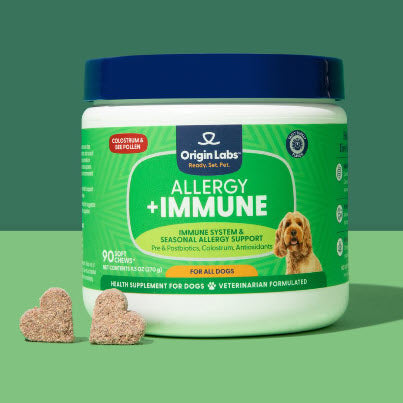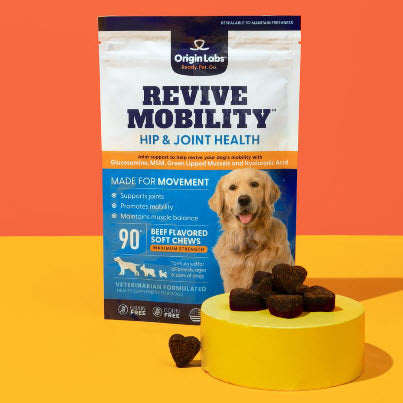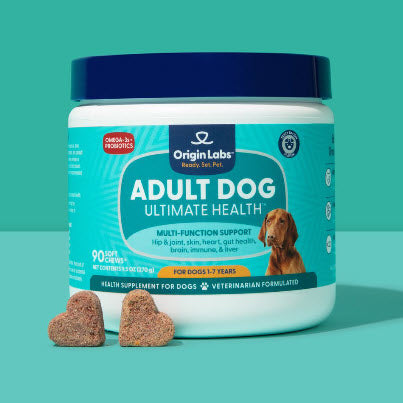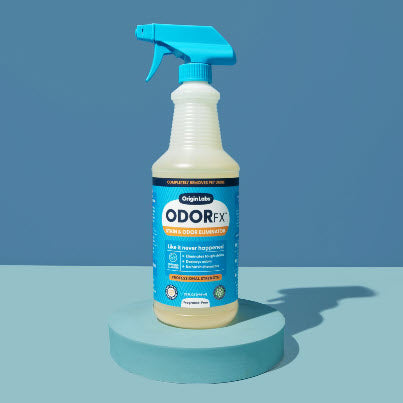Introduction
Prosciutto, a beloved Italian delicacy, has gained immense popularity worldwide. Its savory flavor and delicate texture make it a favorite in many households. As dog owners enjoy this treat, curiosity often arises: can dogs eat prosciutto?
Understanding whether prosciutto for dogs is a safe option is crucial. Dogs have different dietary needs and sensitivities compared to humans. While some human foods are perfectly safe for dogs, others can pose significant health risks. Investigating is prosciutto safe for dogs helps ensure that we provide the best care and nutrition for our furry friends.
For those looking for alternatives and supplements for their canine companions, consider exploring high-quality dog health supplements tailored for various life stages:
- Puppy-specific supplements that provide essential health support during their growth phase.
- Senior dog supplements designed to support specific needs in older dogs.
In this article, we will explore whether it is safe for dogs to consume prosciutto and discuss the potential risks associated with feeding them this cured meat. We will also provide alternative options and guidelines for treating your dog safely.
The Risks of Feeding Prosciutto to Dogs
High Salt Content in Prosciutto
Prosciutto is known for its high salt content, which can be particularly detrimental to dogs. Excessive salt intake can lead to a condition called sodium ion poisoning or salt toxicity. Symptoms of this condition in dogs include:
- Vomiting
- Diarrhea
- Excessive thirst and urination
- Lethargy
- Seizures
The high sodium levels in prosciutto can overwhelm a dog's kidneys, leading to dehydration and, in severe cases, kidney failure. Even small amounts of high-salt foods can have adverse effects on smaller dog breeds or dogs with pre-existing health conditions.
Presence of Nitrates and Nitrites
Cured meats like prosciutto often contain nitrates and nitrites used as preservatives. These chemicals help extend the shelf life of the meat but pose significant risks to dogs. Nitrates and nitrites can convert into nitrosamines in the body, compounds that are potentially carcinogenic.
Ingesting cured meats with nitrates and nitrites might cause:
- Gastrointestinal distress
- Methemoglobinemia (a condition where hemoglobin can't release oxygen effectively to body tissues)
- Increased risk of cancer over long-term exposure
These risks underline why prosciutto is bad for dogs, making it an unwise choice for regular treats or diet supplements.
Harmful Spices and Ingredients
Traditional Italian prosciutto includes various spices and ingredients that enhance its flavor but can be harmful to dogs:
- Garlic and Onion: Commonly used in curing processes, both are toxic to dogs. They can cause gastroenteritis and damage red blood cells, leading to anemia.
- Black Pepper: While not toxic in small amounts, it can irritate a dog's gastrointestinal tract if consumed in larger quantities.
- Fatty Cuts: Prosciutto consists largely of fat, which can lead to pancreatitis in dogs. This painful inflammation of the pancreas often requires veterinary intervention.
Given these ingredients' potential harm, it's clear that feeding prosciutto involves significant risks.
Nutritional Value of Prosciutto for Dogs
Overview of the Nutritional Composition of Prosciutto
Prosciutto is a type of dry-cured ham known for its rich flavor and delicate texture. It's made from high-quality pork legs and seasoned with salt. Here's a breakdown of the nutritional content of prosciutto:
- Calories: Approximately 70 calories per ounce
- Protein: Around 8 grams per ounce
- Fat: About 5 grams per ounce
- Sodium: Roughly 570 mg per ounce
These values show the amounts of macronutrients in prosciutto, which are important for determining whether it is suitable for dogs.
Protein Content in Prosciutto and Its Importance for Dogs
Protein is essential for dogs as it supports muscle development, tissue repair, and overall growth. The protein in prosciutto makes it seem like a good choice:
- High Protein Content: With around 8 grams of protein per ounce, prosciutto provides a significant amount of this vital nutrient.
- Quality of Protein: Animal-based proteins like those found in prosciutto are generally considered high-quality because they contain all essential amino acids.
However, high protein alone doesn't make prosciutto an ideal treat. Dog owners must consider other nutritional factors and potential risks associated with feeding such items to their pets.
Fat Content in Prosciutto and Its Potential Impact on a Dog's Health
The fat in prosciutto is another important factor to consider:
- Fatty Acids: While some fats are beneficial, providing energy and supporting cell structure, excessive fat intake can lead to weight gain and related health problems.
- High Fat Content: Prosciutto contains around 5 grams of fat per ounce, which includes saturated fats.
Diets high in fat can increase the risk of pancreatitis, obesity, and heart disease in dogs. While fats are necessary for energy, it's important to maintain a balanced diet for your dog.
Balancing Nutritional Needs
It's important to provide dogs with a balanced diet that meets their nutritional requirements without introducing harmful elements. While prosciutto offers protein and fat, its high sodium and potentially harmful additives outweigh these benefits. Opting for lean meats like chicken or turkey breast can offer similar protein benefits without the added risks.
By understanding the nutritional content of prosciutto and how it can affect your dog's health, you can make better choices about their diet.
Can Dogs Eat Prosciutto: Understanding the Health Implications
Risks of Sodium Chloride Poisoning in Dogs
Prosciutto contains high levels of sodium chloride (salt), which poses significant health risks to dogs. When consumed in large quantities, salt can lead to sodium chloride poisoning, a serious condition that can affect a dog's health.
High Salt Content
- Dogs' bodies are not equipped to handle excessive salt.
- Even small amounts of prosciutto can contribute to an unhealthy spike in sodium levels.
Potential Dangers
- High blood pressure
- Increased risk of heart disease
- Kidney damage
Common Symptoms of Salt Intoxication in Dogs
Identifying the symptoms of salt intoxication early is crucial for prompt treatment. Here are common signs to watch for:
Mild Symptoms
- Excessive Thirst and Urination: Dogs may drink and urinate more than usual.
- Vomiting and Diarrhea: Digestive issues may arise shortly after ingestion.
Severe Symptoms
- Lethargy and Weakness: Affected dogs might appear unusually tired or weak.
- Tremors and Seizures: Neurological symptoms such as tremors or seizures can occur due to severe salt imbalance.
- Incoordination and Confusion: Difficulty walking, confusion, or disorientation are indicative of serious intoxication.
Immediate Actions if Salt Intoxication is Suspected
If you suspect your dog has ingested too much salt, acting quickly can make a big difference:
- Contact Your Veterinarian Immediately: Seek professional advice without delay.
- Provide Fresh Water: Encourage your dog to drink plenty of water to help flush out excess salt.
- Monitor Symptoms Closely: Keep a close eye on your dog and note any changes in behavior or health.
Understanding the risks and being able to identify symptoms early can help mitigate the dangers associated with feeding prosciutto to dogs. Always consult with a veterinarian if you have any concerns about your dog's diet and health. Additionally, it's important to note that while salt is an essential nutrient for dogs, excessive amounts can be harmful to their health.
Safe Alternatives to Feeding Prosciutto to Your Dog
Importance of Providing a Balanced Diet for Dogs with Alternative Protein Sources
Feeding your dog a balanced diet is crucial for their overall health and well-being. While prosciutto may be a tempting treat, it is not the best protein source for your canine companion. Dogs require a diet that includes a variety of nutrients, including proteins, fats, vitamins, and minerals. Ensuring that your dog's diet is well-rounded helps to maintain their energy levels, supports their immune system, and promotes healthy skin and coat.
Exploring Different Options Besides Prosciutto That Are Safe and Healthy for Dogs to Consume
There are numerous alternative protein sources for dogs that are both safe and nutritious. Here are some options:
Chicken
- Lean Meat: Chicken is a lean meat that provides high-quality protein without excessive fat.
- Preparation: It should be cooked thoroughly without any seasoning or bones.
Turkey
- Digestible Protein: Turkey offers easily digestible protein which is great for dogs with sensitive stomachs.
- Cooking Tip: Ensure it's cooked plain and avoid using additives like garlic or onions.
Beef
- Rich in Nutrients: Beef is rich in essential nutrients such as iron and zinc.
- Feeding Advice: Opt for lean cuts and cook the meat properly to eliminate harmful bacteria.
Fish
- Omega-3 Fatty Acids: Fish like salmon and sardines are excellent sources of omega-3 fatty acids which support skin and coat health.
- Caution: Avoid feeding raw fish to prevent parasitic infections.
Lamb
- Alternative Protein Source: Lamb can be a good alternative protein source for dogs with food allergies.
- Serving Suggestion: Cook it thoroughly and avoid fatty cuts.
Eggs
- Complete Protein: Eggs are a complete source of protein containing all essential amino acids.
- Serving Method: Serve them boiled or scrambled without any butter or oil.
These alternatives ensure your dog receives the necessary nutrients while avoiding the potential risks associated with feeding prosciutto.
Pork as an Alternative Protein Source for Dogs
Pork can also be considered as an alternative protein source for dogs. It's important to choose lean cuts like pork loin or tenderloin. Cooking the pork thoroughly is essential to kill any potential parasites like trichinosis. Avoid adding any seasonings, especially those containing garlic or onions which are toxic to dogs.
Benefits of Pork:
- High in protein
- Contains essential amino acids
- Rich in vitamins such as B12
By incorporating these safe and healthy alternatives into your dog's diet, you can provide them with the necessary nutrients they need without compromising their health. Always consult with your veterinarian before introducing new foods to ensure they align with your dog's specific dietary needs.
Safe Meat Choices for Dogs
Ensuring the Safety of Poultry Options for Your Dog's Diet
Poultry, such as chicken and turkey, can be a healthy and safe option for dogs. When considering whether dogs can eat poultry, it's essential to focus on preparation:
- Cook Thoroughly: Raw poultry can contain harmful bacteria like Salmonella or E. coli. Always ensure the meat is cooked thoroughly.
- Remove Bones: Cooked bones can splinter and cause internal injuries or blockages. Always remove bones before feeding poultry to your dog.
- Avoid Seasonings: Spices, garlic, onions, and other seasonings commonly used in cooking can be toxic to dogs. Serve plain, unseasoned poultry.
Providing Insights into the Benefits of Fresh Cooked Protein for Dogs
Feeding freshly cooked protein has several benefits over processed options:
- Nutritional Value: Freshly cooked meat retains more nutrients compared to highly processed foods.
- Digestibility: Dogs often find freshly cooked protein easier to digest.
- Control Over Ingredients: Cooking at home allows you to control what goes into your dog's meal, ensuring no harmful additives or preservatives are included.
Conclusion
Understanding whether dogs can eat prosciutto is crucial for any responsible pet owner. While prosciutto may be a delicious treat for humans, it poses several risks for dogs:
- High salt content: May lead to sodium chloride poisoning.
- Nitrates and nitrites: Common in cured meats and potentially harmful.
- Spices and Ingredients: Traditional Italian prosciutto often contains elements unsafe for dogs.
Despite its high protein content, the fat and additives make prosciutto an unsuitable choice. Instead, consider safer alternatives:
- Balanced diet with alternative protein sources
- Safe meat choices like properly cooked poultry and red meat
Encouraging responsible feeding practices ensures the health and well-being of your furry friend. Always opt for safe, nutritious options over risky indulgences like prosciutto.
FAQs (Frequently Asked Questions)
Can dogs eat prosciutto?
Prosciutto is not recommended for dogs due to its high salt content, nitrates, nitrites, and potentially harmful spices and ingredients.
Is prosciutto safe for dogs?
Prosciutto is not considered safe for dogs to consume due to the health risks associated with its high salt content, nitrates, nitrites, and potentially harmful spices and ingredients.
What are the health risks of feeding prosciutto to dogs?
Feeding prosciutto to dogs can pose health risks such as sodium chloride poisoning, which can lead to symptoms of salt intoxication in dogs.
What is the nutritional value of prosciutto for dogs?
Prosciutto contains protein and fat, but its high salt content and potential health risks make it an unsuitable choice for a dog's diet.
Are there safe alternatives to feeding prosciutto to my dog?
Yes, there are alternative protein sources such as pork and other freshly cooked meat options that are safe and healthy for dogs to consume.
What are safe meat choices for dogs?
Safe meat choices for dogs include poultry and certain red meats, as long as they are properly cooked and provided as part of a balanced diet.
Should I feed prosciutto to my dog?
No, it is not recommended to feed prosciutto to your dog due to its high salt content, nitrates, nitrites, and potentially harmful spices and ingredients. It's important to prioritize your dog's health by choosing safe and suitable food options.








